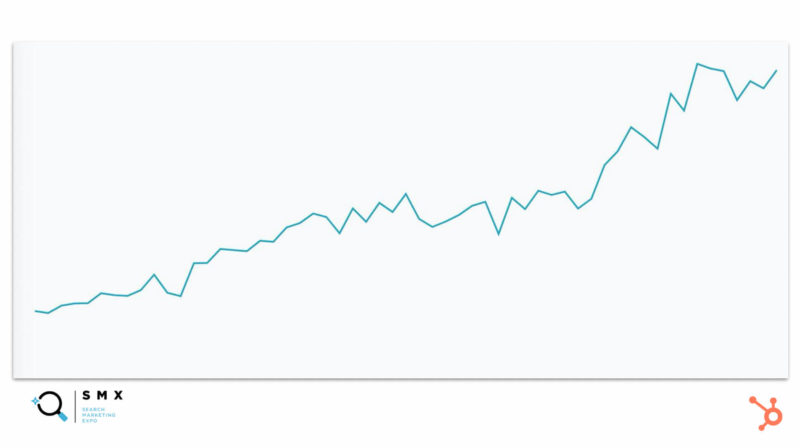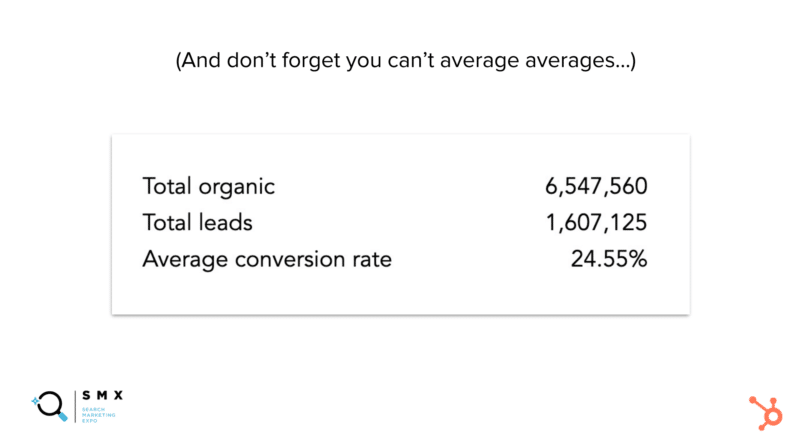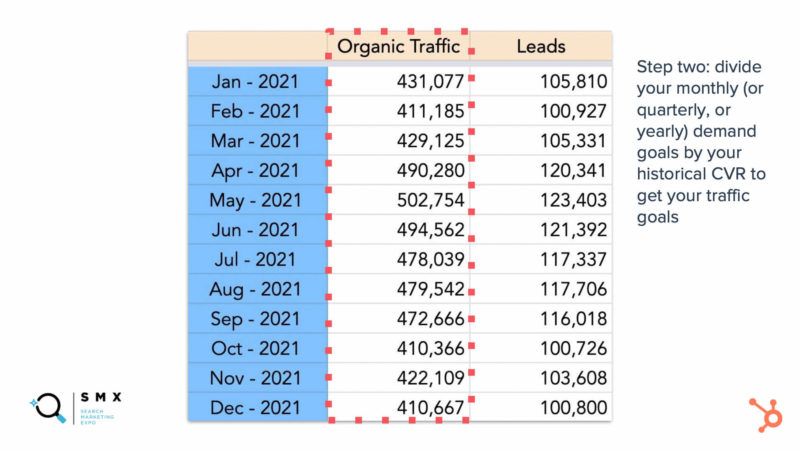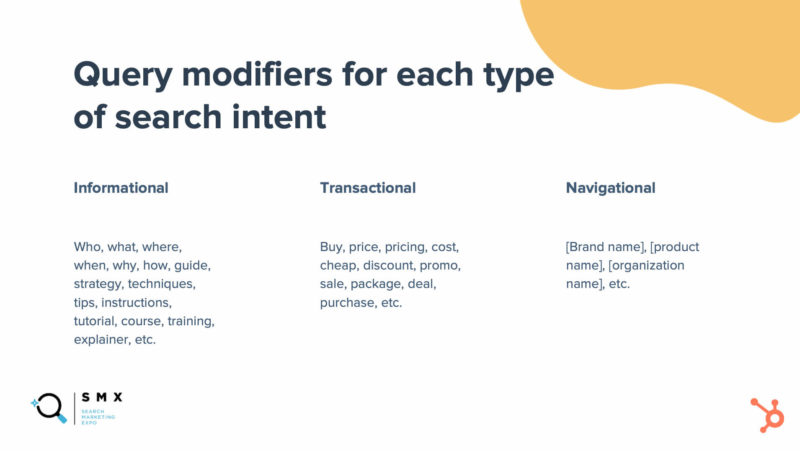How to plan SEO content that actually ranks

Learn how to identify metrics for content goals, perform keyword research that drives SEO value and build your content calendar.
The key to effective content is planning. I’m sure there are some people who just type out bangers from their stream of consciousness, but those writers are definitely few and far between. The rest of us rely on planning and thoughtful execution. So how do you plan SEO content that actually ranks?
Aja Frost, head of English SEO at HubSpot, went over just that at SMX Create this year. One of the highest-rated sessions at the event, her top suggestions are covered here to help you get your content higher in search engine results.
How to identify measureable metrics for your content goals
Frost recommends picturing a chart like the one below and asking, “What do I want to see on the Y-axis?”

Step 1. “Figure out what would make your boss [or] your client over the moon on the Y-axis,” she said. It’s likely not traffic, but something more like leads, appointments, purchases—which should be your ultimate goal. The traffic goals will lead us to those end targets. “This is why we start with demand goals and back those into our traffic goals by [dividing] by your historical or expected conversion rates.”
demand goals ÷ historical (expected) conversion rates = traffic goals
Note: The formula above has been adjusted to correct for a typo in the presentation slides.
At this point you may be like, that’s great but I have no idea what my expected conversion rates are. Here’s how to figure it out: “Take your demand actuals from the last 12 to 24 months… and then compare them to your traffic actuals from the same time period,” Frost said. “Sum up the demand metric of your choice divided by your organic traffic, and there you go. You’ve got your CVR.”

If you don’t have this data, you’ll likely have to get creative and figure out a comparable conversion rate. For example, if you’re creating a new product or service, you can use comparable CVRs from other assets you’ve been working on (say a blog or an online community, etc.).
Step 2. Next, figure out the demand you want to drive in the next 12 months and divide those by your historical or expected CVR. That gives you traffic goals.

Once you have these goals, you should also calculate where you’d land if you did absolutely nothing. “Unless you have zero content right now, your traffic is going to grow regardless of what you do,” advised Frost. “So by figuring out where you’d land if you did nothing, and the gap between that and what you need to grow, you can figure out how much additional traffic and conversions you need to generate.”
Step 3. After that, you need to determine how much monthly search volume you have to target to make up the difference between your projections and how your content would grow if you did nothing. Frost recommends a CTR curve analysis and creating estimates by SERP positions 1-3, 4-6, 7-9 and 10th position on the first page of search results. “You can multiply your weighted CVR by the traffic you need to generate to find your MSV [monthly search volume] estimates by positions,” said Frost.

How to perform keyword research based on personas
First, create or refine your personas. “When I talk to advanced SEOs, this is often a step they skip,” said Frost. But she implores SEOs of all skills levels not to forego this step. “The more deeply you understand your personas and the more detailed your insights, the more comprehensive and accurate your list of seed keywords will be.” All of your target keywords in the research process stem from these personas.
Some of the basic persona questions you need to answer include what their industry is, how big their department within their company is and what tools they need to do their jobs. So, if you find out that your target persona is in the hospitality industry with a team of two people and a company of 24 and that they typically use tools for hotel reservations and accounting, you’ll know that “hotel management software” is a seed keyword.
From there, develop your list of seed keywords and expand it out to related short-tail keywords and down to long-tail keywords. Along with the standard tools (Ahrefs, Moz, Semrush), Frost also recommends a few other keyword research tools that SEOs may not know about. Using different tools also means that you’ll get insights that other SEOs researching this space may not have. Her recommended tools include Keyword Keg, Bing’s keyword research tool and seedkeyword, which lets you ask your target audience how they’d search for a particular topic.
After that, clean the list up based on what you know about each persona and determine what’s relevant and what may not be worth your time. “Filter, categorize, and group your keywords together so you can efficiently create content,” recommended Frost.

Once you’ve got your list of seed keywords, upload them into the tool of your choice and download search suggestions.
Next, Frost categorizes queries by intent: informational, transactional, and navigational. “Informational queries contain modifiers like ‘who, what, where, when, why,’ transactional queries contain questions related to price, cost, and promotion, and navigational queries are specific to the brand or product you’re doing research for,” advised Frost.
Build an editorial (or content) calendar
Find the editorial calendar tool that works best for you and that you’ll actually use — whether it’s Trello, Asana, Monday, or just plain Google Sheets. From there, Frost recommends adding the following to your content calendaring tool of choice:
- The basics: Like target keyword, URL recommendations, headers and more.
- Internal linking opportunities: Products, offers or signup pages.
- Level of effort: The average of keyword difficulty of target keyword(s) multiplied by competitor content quality score.
- Expected traffic: Multiply search volume by the CTR of your expected position.
- Competitive advantage: Something that will differentiate your content (original data, a strong point of view, etc.).
You can also group keywords by theme (as opposed to persona) and sum up how much search volume you’re targeting for each theme. Finally, you get to writing your next-level content based on these goals and data points.
Learn more from SMX Create on demand
This is just a taste of what’s available on-demand from the super popular SMX Create event. Check out Aja Frost’s full presentation and the rest of the SEO content creation journey including…
- Creating compelling content for SEO with Alli Berry from The Motley Fool,
- Optimizing your content for increased findability with Niki Mosier from AgentSync and
- Alternative content strategies to increase organic traffic and tracking success in 2021 with Maria Amelie White from Floristpro and John Shehata of Conde Nast.



